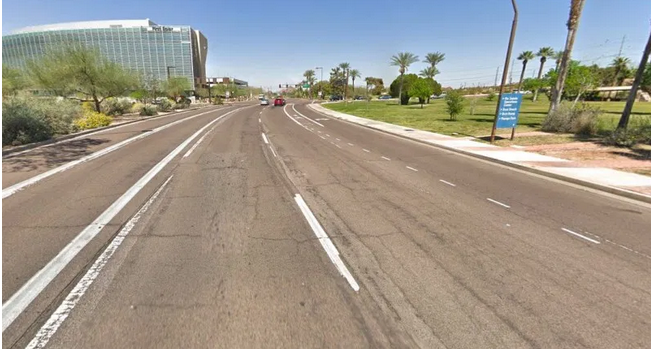The self-driving Uber car that killed an Arizona woman in 2018 was not programmed to identify pedestrians outside of a crosswalk and lacked software that could have spared her life, a federal safety agency said.
The National Traffic Safety Board revealed Uber's driverless Volvo detected, but failed to brake, for Elaine Herzberg when she crossed the speedway-style street in Tempe with her bicycle, according to a trove of documents released Tuesday after a 20-month review of the first autonomous car-involved death in the country.
The documents pinpointed the six-second period when the SUV's software sensed Herzberg, but was confused by her movements, then kept speeding at 45 miles per hour without slowing down. The documents also show that Uber had disabled Volvo's automatic emergency brake system to prevent stop-and-go driving, instead setting up an alarm that would alert the test driver to take over the car. But that system was flawed, too:
Exactly 1.2 seconds before the car struck Herzberg, the car realized that it would neither be able to stop in time nor swerve around the pedestrians. But it did not sound the alarm for test driver Rafaela Vasquez until .2 seconds before the crash, leaving Vasquez, 44, far too little time to get control of the vehicle. She hit the brakes a full second after the car hit Herzberg.
"Although the [Automatic Driving System] sensed the pedestrian nearly six seconds before the impact, the system never classified her as a pedestrian — or predicted correctly her goal as a jaywalking [sic] pedestrian or a cyclist — because she was crossing ... at a location without a crosswalk," the report said. "The system design did not include a consideration for jaywalking pedestrians."
The vehicle's software also kept changing its classification of Herzberg as a vehicle, a bicycle, and an unknown object, preventing the car from braking or steering away, the report confirmed.
"As the ADS changed the classification of the pedestrian several times ... the system was unable to correctly predict the path of the detected object," the report said.
Uber is unlikely to be held accountable for its safety lapses. Tempe prosecutors did not file criminal charges against the company or its officials last year, and Uber quickly reached a settlement with Herzerg's grieving family. A company spokeswoman said Uber regrets that its vehicle took Herzberg's life and has made an array of safety improvements since the accident.
"In the wake of this tragedy, the team at Uber Advanced Technologies Group has adopted critical program improvements to further prioritize safety," Uber spokeswoman Sarah Abboud said in a statement. "We deeply value the thoroughness of the NTSB’s investigation into the crash and look forward to reviewing their recommendations once issued after the NTSB’s board meeting later this month.”
Uber officials confirmed they disabled auto-braking on the Volvo because the car was initially designed for a human driver and it was not compatible at the time to build its self-driving system on top of the Volvo's automatic brake system. And the company acknowledged it underestimated how difficult it would be for drivers to pilot the new vehicles.
The Tempe roadway itself may have enabled unsafe driving conditions. The road's speed limit was 45 miles per hour and Herzberg attempted to cross a section of the street that pedestrians had used before although it was 360 feet from the nearest crosswalk.
But NTSB investigators determined that the Uber team that oversaw its Arizona test program lacked a formal safety plan, dedicated safety staff, and proper operating procedures. Uber also reduced its test drivers from two to one per vehicle five months before Herzberg's death, according to Bloomberg. And there were two other instances where vehicles may not have identified other objects in the road before getting into accidents, the report found.
Uber has since put two drivers in its piloted vehicles, increased training on defensive and distracted driving, improved tracking and detection of pedestrians and cyclists, and enabled automatic emergency stops.
The NTSB had outlined some of these details in an earlier report in May, 2018, but the agency has not yet made any recommendations. Its final report will be released on Nov. 19.






